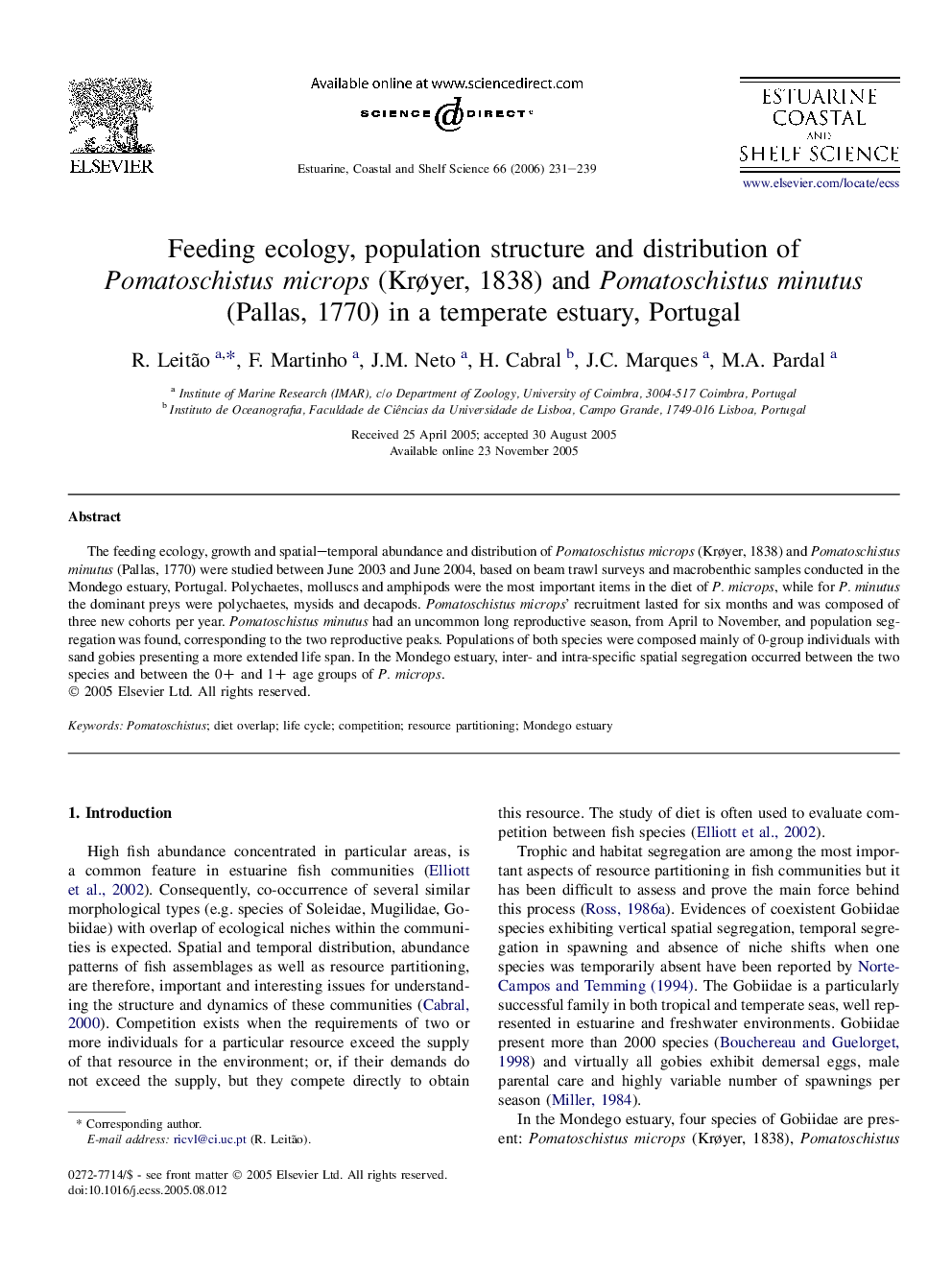| Article ID | Journal | Published Year | Pages | File Type |
|---|---|---|---|---|
| 4542578 | Estuarine, Coastal and Shelf Science | 2006 | 9 Pages |
The feeding ecology, growth and spatial–temporal abundance and distribution of Pomatoschistus microps (Krøyer, 1838) and Pomatoschistus minutus (Pallas, 1770) were studied between June 2003 and June 2004, based on beam trawl surveys and macrobenthic samples conducted in the Mondego estuary, Portugal. Polychaetes, molluscs and amphipods were the most important items in the diet of P. microps, while for P. minutus the dominant preys were polychaetes, mysids and decapods. Pomatoschistus microps' recruitment lasted for six months and was composed of three new cohorts per year. Pomatoschistus minutus had an uncommon long reproductive season, from April to November, and population segregation was found, corresponding to the two reproductive peaks. Populations of both species were composed mainly of 0-group individuals with sand gobies presenting a more extended life span. In the Mondego estuary, inter- and intra-specific spatial segregation occurred between the two species and between the 0+ and 1+ age groups of P. microps.
